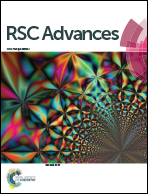Gate capacitance model for the design of graphene nanoribbon array field-effect transistors
Abstract
In graphene nanoribbon (GNR) array field-effect transistors with sufficiently narrow ribbon widths and ribbon-to-ribbon distances, the gate capacitance and relevant carrier mobility are strongly affected by fringe field effects at the ribbon edges and the fringe fields between neighboring GNRs may overlap. To overcome the difficulties of predicting the channel properties of GNR array devices in design and characterization and of extracting accurate carrier mobility with complex fringe field effects, a simplified model for the prediction of gate capacitances in the GNR array channels of field-effect devices was developed. Numerical analyses were carried out, first, using the finite element method to understand how the gate capacitance of the GNR array channel is affected by changes in the configuration of the GNR arrays and the choice of gate dielectrics. Based on this analysis, a general model for determining the gate capacitance as a function of various configurations and material variables was formulated. This model was verified by performing additional finite element analyses and by making comparisons with previously reported experimental results. Good agreement among this data implies the generality of this model.


 Please wait while we load your content...
Please wait while we load your content...